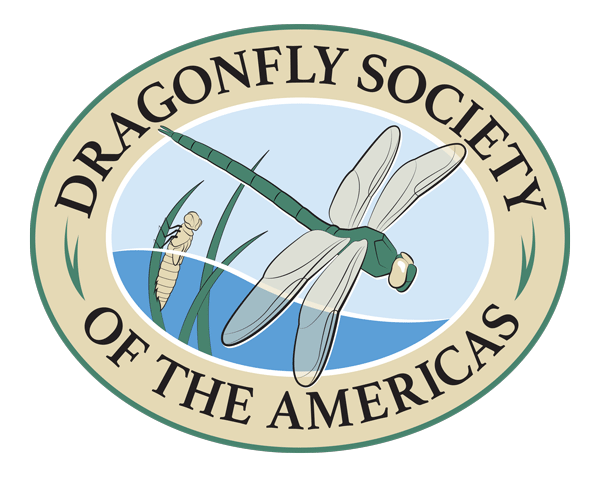Immature individual of the Big Plateau Blue damsel, M. laterale, showing off the orange coloration in its abdomen. (Photo by Leonardo Rache Rodriguez)
(Photo #2) Group of individuals of several sexes of Big Plateau Blue damsel, M. laterale, away from the waterbody. Photo by Leonardo Rache Rodriguez.
(Photo #3) M. lateral in the mating wheel. Photo by Leonardo Rache Rodriguez.
(Photo #4) --Male of M. laterale feeding. Photo by Leonardo Rache Rodriguez.
October’s Featured Species: Big Plateau Blue Damsel (Mesamphiagrion laterale)
This month’s DSA species focus is the Big Plateau Blue Damsel (Mesamphiagrion laterale). Measuring around four centimeters (about one-and-a-half inches) in length, this blue and black member of the Coenagrionidae family is found in South America; from Venezuela, to Colombia, to Ecuador. Read on to learn more about this delightful species from our October guest blogger Leonardo Rache Rodriguez as he chases them in Bogota, Colombia.
A South American Beauty
The Big Plateau Blue Damsel, Mesamphiagrion laterale, is a very common species in the wetlands of Bogota. However, even regular visitors to these ecosystems may overlook it due to its slender body and short flights. The damselfly appears in groups of up to 30 individuals, usually composed of a mix of mature and immature males and females. Immature individuals are easily differentiated from mature individuals by the presence of an orange mark on the dorsum, or upper side, of the first abdominal segments. These changes in body coloration across their adulthood may confuse a naive observer into thinking these damselflies are more than one species.
You may observe large groups of M. laterale individuals in the grassy wetlands, away from water. Intraspecific aggressive behaviors are uncommon. The Big Plateau Blue Damsel feeds on small dipterans (true flies) in these habitats. They may also be preyed on by other arthropods, mainly spiders.
Reproductive behavior is most easily seen between 11 a.m. and 1 p.m., their activity peak. Individuals seem undisturbed by observers. In my years of watching their breeding behavior, I have not seen clear male courtship. Instead, males pounce on females in flight or those perched on vegetation. Then, they take them in tandem. Sometimes females move their abdomens up and down. This can be interpreted as a refusal to copulate with a male.
After a male takes a female in tandem, other males will try to do the same with that female. The pair usually flies into nearby vegetation to avoid the harassment! This makes observation of oviposition difficult. Females usually oviposit in tandem with the male, mainly on one of the most widespread flowering plants in Bogota’s wetlands, larger bur marigold (Bidens laevis).
The duration of the larval (or nymph) stage takes between nine and ten months. The larvae can be easily reared in captivity because of their small size. They survive on water fleas, copepods, and small notonectidae (aquatic insects) which are found in their natal waters.
This species is particularly important to me as an odonatologist. It was included in my first research project after I received my bachelor’s degree. I was able to select one species----and of course, I chose M. laterale. Its light and contrasting colors are just another reason to love this species. My best photos are of Big Plateau Blue Damsels. It seems they like being photographed!
Our guest blogger for October is Leonardo Rache Rodriguez, a biologist who likes fieldwork and teaching. Rodriguez has worked with dragonflies and damselflies for more than ten years, especially focusing on ecological and morphological issues. Currently, he is a school teacher trying to help kids appreciate the intrinsic value of insects. Says Rodriguez: “The world is in their hands and legs, respectively.”




